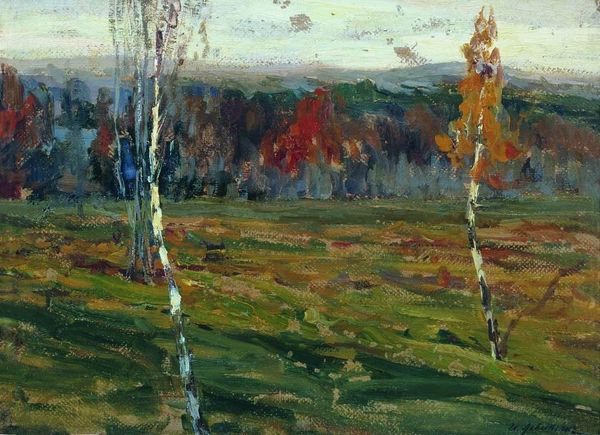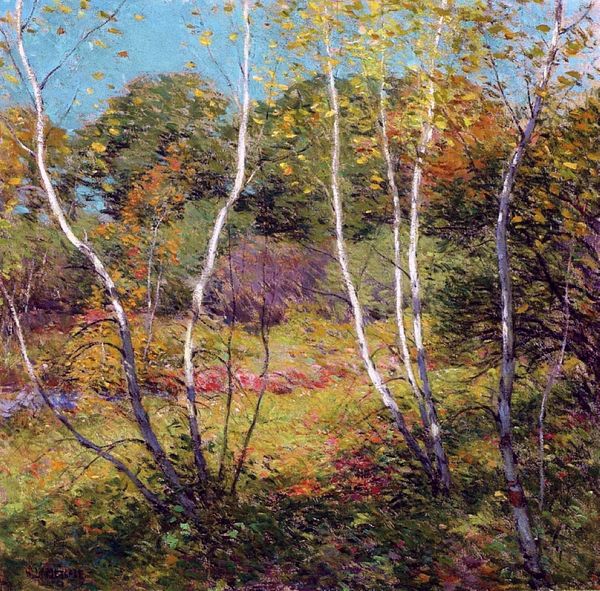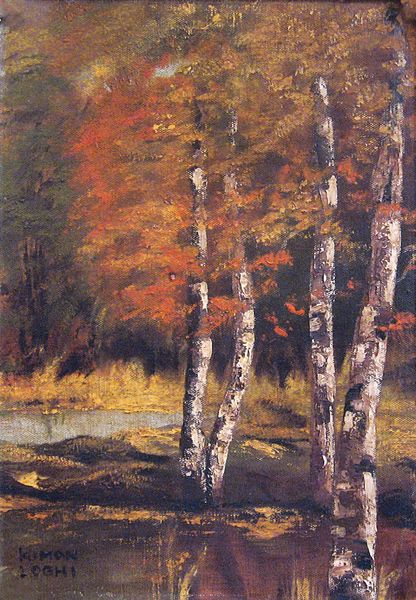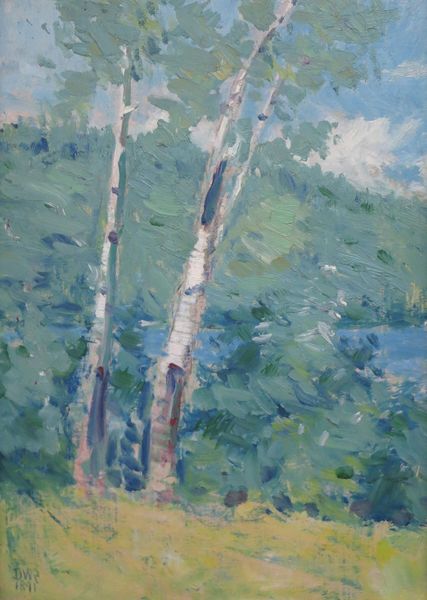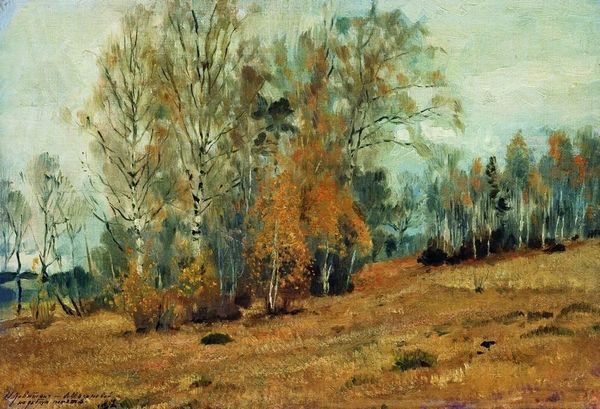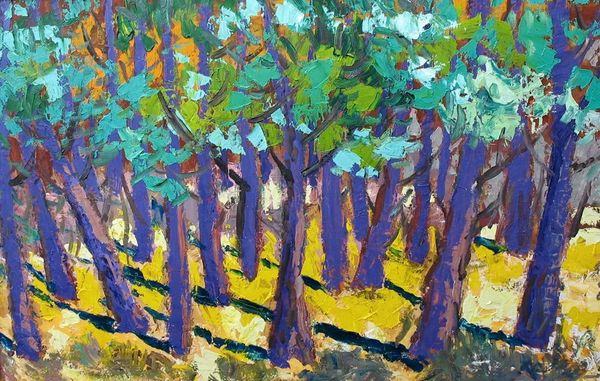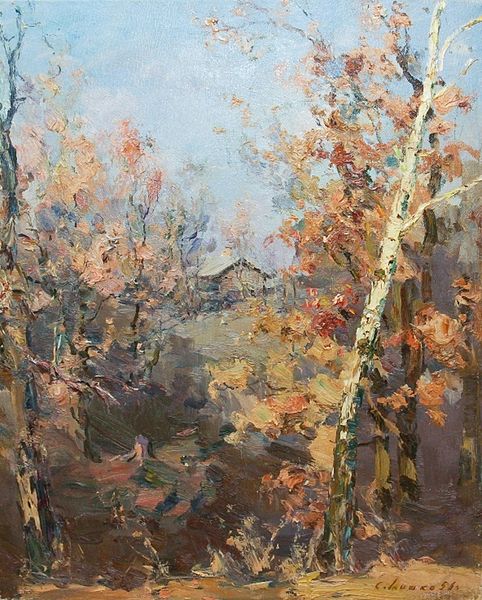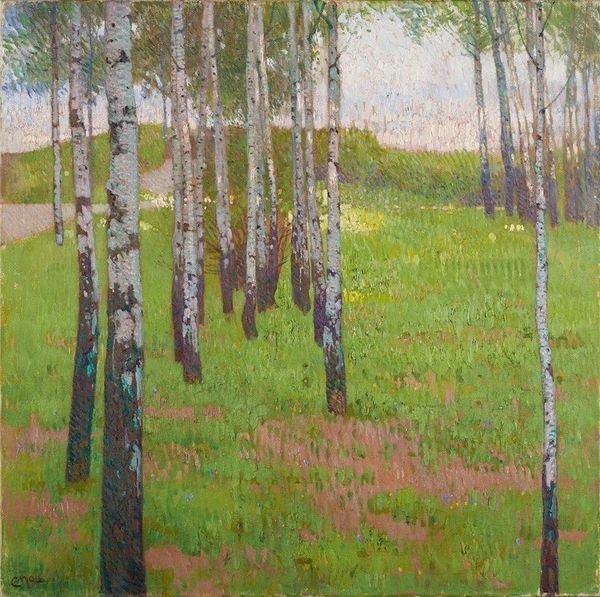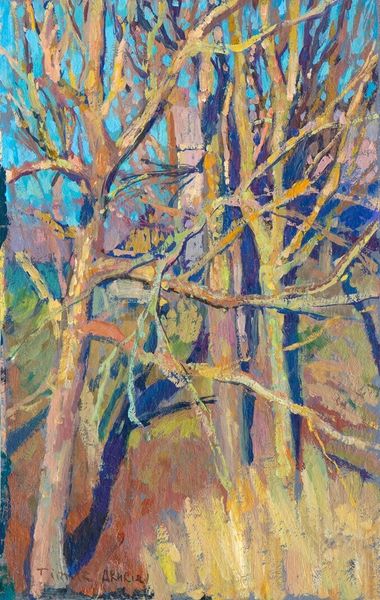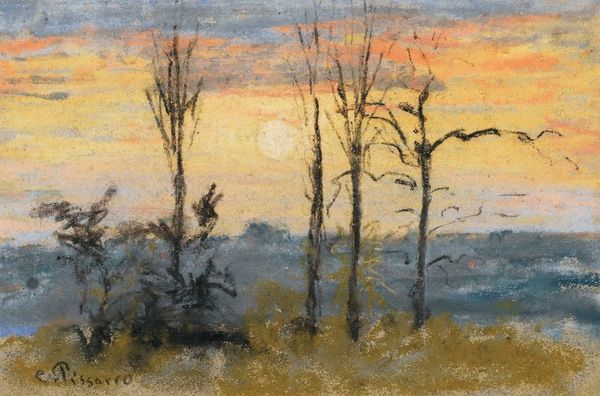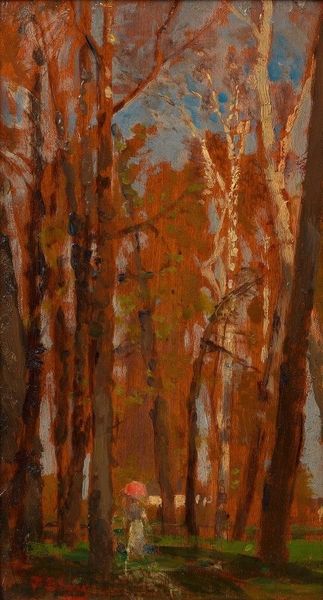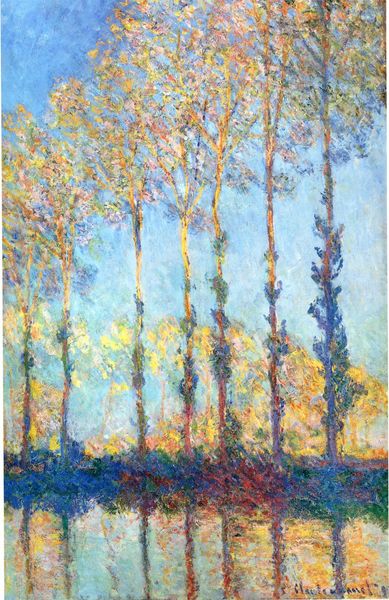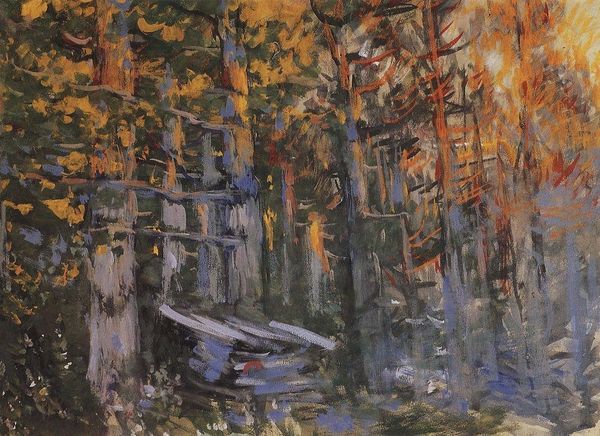
Copyright: Public domain
Editor: Here we have Isaac Levitan's "Autumn," painted in 1899, using oils. The immediate feeling I get is one of quiet melancholy, those slender, dark tree trunks almost like bars… What do you see when you look at this piece? Curator: Melancholy is spot on. For me, Levitan captured that bittersweet moment when the vibrancy of summer gives way, but before the starkness of winter sets in. It’s a transitional sigh of nature, if that makes any sense? Notice how he uses these vertical tree trunks, almost calligraphic in their simplicity, to create depth without really defining a foreground or background? He lets the impressionistic dabs of color do the work. Do you get a sense of the *plein air* technique? Editor: I do, especially in the looseness of the brushwork. Was Levitan part of a specific art movement? Curator: Very much so! Levitan was a key figure in Russian Impressionism. They aimed to capture light and fleeting moments of emotion, deeply tied to the Russian landscape, but with an underlying sentiment. A sort of romanticized naturalism if you will. And a big dose of mood. Editor: That's fascinating. I wouldn't have thought "melancholy" could be a national artistic trait, but it resonates, looking at the work through that lens. I guess seeing it at the Tretyakov Gallery reinforces that. Curator: Absolutely. Think of those grey Russian skies translated onto canvas – it's inescapable! It gives even the brighter gold hues a sense of introspection. But does it shift your perspective, seeing that sentiment within the *style* now? Editor: It certainly does. Now I’m not just seeing trees, but…the *feeling* of autumn. Thanks for sharing this with me. Curator: The feeling *is* the thing! And it has been a pleasure. Thanks!
Comments
No comments
Be the first to comment and join the conversation on the ultimate creative platform.
